Today I will show 3 different ways to find the sum of a proper fraction and a whole number with some examples.
Content:
Recall that a proper fraction is a fraction where the numerator is less than the denominator. Also, a mixed number is the sum of a whole number and a proper fraction.

1) Classical method
Let’s take a look at this method with an example, adding 4 + 2/3. First, we convert the whole number (4) to a fraction by putting 1 as the denominator, so 4 becomes 4/1.
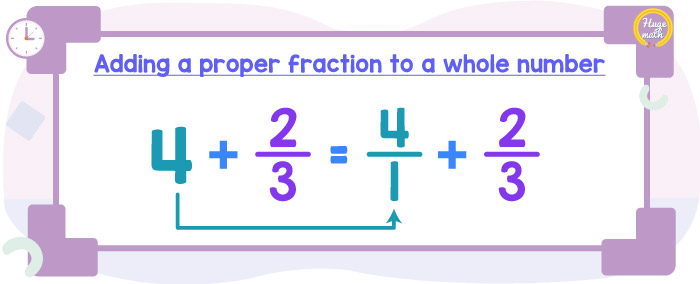
Next, we need to find the sum of 4/1 and 2/3. To determine the numerator of the resulting fraction, we find the sum of the cross products (4×3 and 1×2). Lastly, to find the denominator of the resulting fraction, we multiply the denominators (1 × 3).
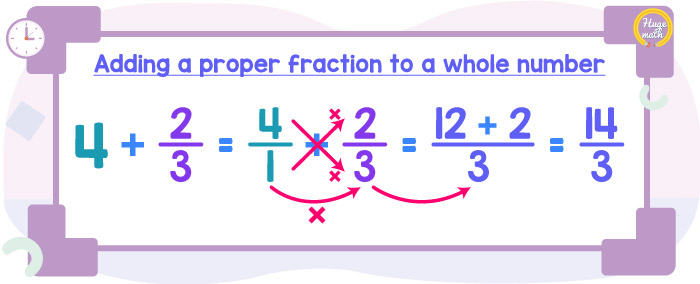
2) Mixed number method
For using this method, we need to remember that a mixed number is the sum of a whole number and a proper fraction, and that is exactly what we have in this case, given that 4 is a whole number and 2/3 is a proper fraction. So, we can rewrite our fraction addition as a mixed number.
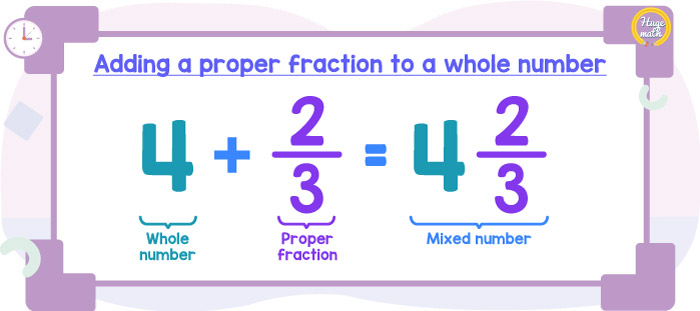
Next, we can convert this mixed number to an improper fraction. To find the numerator of the improper fraction, we multiply the denominator (3) by the whole number (4) and then we add this result to the numerator (2). Finally, the denominator (3) stays the same.
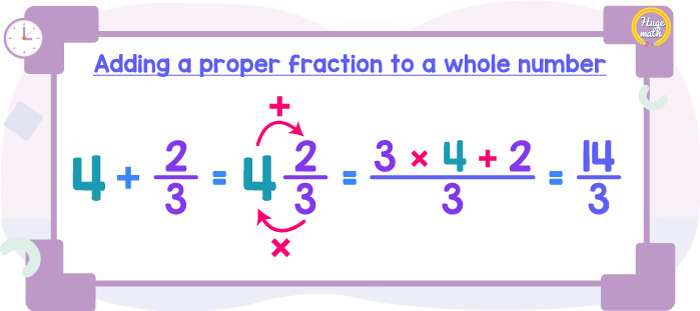
3) Quick method
We can use a faster method, it’s possible to directly find the sum of a whole number and a proper fraction without going through a mixed number. First, we multiply the denominator (3) by the whole number (4), then we add this result to the numerator (2). Finally, we write this number over the denominator of the initial fraction (3).
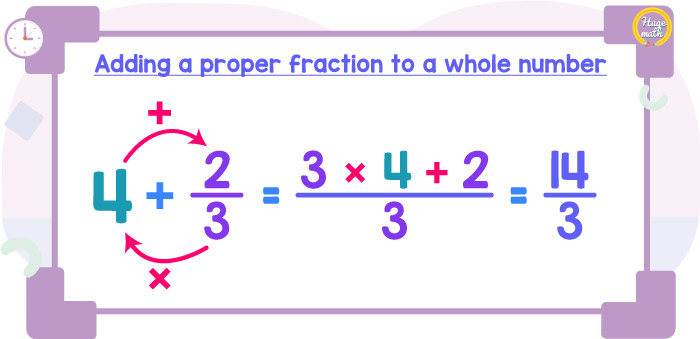
As you can see, using any of the methods the answer is always the same, 14/3.
Video
In the following video, I will show more examples of adding a proper fraction and a whole number.
That’s all for today, however, if you want to learn more about fractions, check out these lessons.